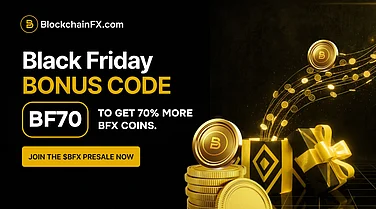The digital finance landscape is evolving extremely rapidly, and altcoins—any cryptocurrency other than Bitcoin—are leading that evolution. Over the past two years, Decentralized Finance or DeFi has revolutionized legacy banking and lending models by cutting out middlemen, enabling peer-to-peer transactions, and building smart contracts. Whereas Bitcoin first introduced the concept of utilizing cryptocurrencies, altcoins have taken the concept further with increased functionality, scalability, and flexibility across various DeFi platforms.
From fueling lending protocols to opening new means for passive income, altcoins are changing the way that individuals borrow, lend, and earn interest in the decentralized economy.
Learning About Altcoins and Their Role in DeFi
All the other cryptocurrencies except Bitcoin are referred to as altcoins, such as Ethereum, Solana, Avalanche, Cardano, and Chainlink. All these cryptocurrency tokens have certain unique features to facilitate various aspects of decentralized finance to be performed.
Altcoins serve several purposes in DeFi
Assets to be used as collateral on lending and borrowing platform.
Governance tokens to allow users to vote for protocol upgrades
Utility tokens for transaction fees or staking rewards
Stablecoins that stabilize value for lending and trading purposes
These use cases have brought altcoins into the mainstream of the DeFi landscape, propelling finance innovation to the second generation.
How Altcoins Are Shaping Up DeFi and Lending Platforms
1. Diversification Beyond Bitcoin
Although Bitcoin remains a store of value, it lacks the programmability needed for DeFi. Altcoins like Ethereum introduced smart contracts—self-executing computer programs to lend, borrow, and exchange without the need for third parties.
Diversification has:
Increased lending and liquidity opportunities for customers
Supported different collateralization types (e.g., ETH, MATIC, AVAX)
Supported more scalable and versatile lending options
For instance, Compound and Aave, particularly strong DeFi lending protocols, allow users to lock up different altcoins to gain interest or borrow against a different token.
2. Facilitating Smart Contract-Based Lending
Smart contracts are the foundation of DeFi lending platforms. They bypass banks or credit institutions by providing secure automatic trades.
Altcoins on Solana and Ethereum platforms facilitate such contracts to boost transparency and immutability.
Prime advantages are:
Instant repayments and no-intermediary loans
Lower relative transaction costs compared to traditional finance
Lower default or fraud risk with automated enforcement
This has turned decentralized lending into a global financial instrument that is accessible to everyone with internet access.
3. Yield Farming and Staking Opportunities
Altcoins are at the core of yield farming—a DeFi activity whereby individuals lend liquidity to sites and are rewarded in altcoins. Interest accrued is typically paid out by lending protocols in altcoins, which encourages individuals to lend and stake into pools of liquidity.
Yield farming: Income is produced by lenders or stakers of altcoins.
Staking: Investors put altcoins down to lock up a network and earn passive returns.
This process supports long-term engagement and encourages network stability and preservation of liquidity.
4. Collateralization and Freedom of Borrowing
Classic capital markets only require credit grades or real collateral for borrowing. DeFi platforms, however, allow for borrowing money by collateralizing altcoins.
Example:
Collateralize tokens of Ethereum or Cardano.
Borrow stablecoins like DAI or USDC over them.
Pay back loans at will without hurting credit grades.
This decentralized strategy offers unprecedented financial power and access—especially to the unbanked or underbanked masses of the world.
5. Governance and Community Ownership
Perhaps the most revolutionary aspect of altcoins in DeFi is governance tokens. These facilitate voting on protocol enhancements, upgrades, and fee adjustments.
Examples that come to mind are UNI (Uniswap) and COMP (Compound) tokens, whereby users can suggest and vote on enhancements.
This shift to community ownership has:
Increased user participation and transparency
Less dependence on central management
Encouraged long-term development of the ecosystem
6. Improved Interoperability and Cross-Chain Lending
Most modern altcoins are attempting to address the problem of blockchain segregation by promoting interoperability—the ability of different blockchains to communicate and share information.
Projects like Polkadot, Cosmos, and Avalanche are constructing bridges between blockchains in order for users to lend and borrow across networks without a glitch.
This cross-chain functionality boosts liquidity and makes DeFi lending platforms more efficient between worlds.
Main Advantages of Altcoin-Based DeFi Lending
Accessibility: Anyone can lend or borrow with just a crypto wallet.
Transparency: Transactions are placed on public open blockchains.
Efficiency: Smart contracts reduce fees and eliminate intermediaries.
Profitability: Staking and yield farming provide passive returns.
Security: Blockchain encryption ensures asset protection and accountability.
Challenges and Risks to Keep in Mind
While promising, altcoins and DeFi sites are faced with the following challenges:
Volatility: Altcoin prices can appreciate very rapidly and hence collateral values are affected.
Weakness of smart contracts: Attacking or vulnerability can lead to loss of finance.
Risk of regulation: Governments are yet to determine crypto regimes.
Risks of liquidity: Smaller altcoins have very low trading volumes.
It is essential to be aware of these risks prior to investing or utilizing DeFi lending platforms.
The Future of Altcoins in DeFi
The decentralized finance future is mass adoption, scalability, and innovation—and it's powered by altcoins. New advancements such as Layer-2 solutions, cross-chain lending, and AI-based DeFi platforms will continue to make altcoins:
Increase financial inclusivity
More efficient lending
Provide diversified investing opportunities
With the evolution of regulatory regimes and blockchain technology, altcoins will continue to remain the force that drives the global financial landscape anew.
Frequently Asked Questions (FAQs)
1. What are altcoins?
Altcoins are all cryptocurrencies except Bitcoin. They range from Ethereum, Cardano, Solana, and thousands of others that are designed to fuel other applications of a blockchain.
2. How do altcoins enable DeFi lending?
Altcoins are used as collateral, governance tokens, and liquidity assets in DeFi lending protocols to enable users to lend, borrow, and gain interest without recourse to traditional banks.
3. Is it secure to use altcoins in lending on DeFi?
DeFi platforms use blockchain-based smart contracts for security but always have to do their homework well due to market volatility and possible risk.
4. What is the difference between yield farming and staking?
Yield farming is earning rewards for providing liquidity to DeFi platforms, while staking is using altcoins as collateral to help secure a blockchain network and earn interest.
5. What does decentralized finance promise altcoins?
Altcoins will continue driving DeFi innovation with greater interoperability, governance, and cross-chain lending to drive decentralized finance further into the mainstream and more effectively.
Conclusion: A New Era of Decentralized Finance
Altcoins aren't just alternatives to Bitcoin—altcoins are the backbone of decentralized finance. Altcoins can facilitate smart contracts, provide liquidity, and provide lending facilities, so they're revolutionizing how human beings interact with money. As DeFi continues to evolve, altcoins will continue to push financial innovation, enable users everywhere, and construct an open, inclusive, and borderless financial future.
Actually, the altcoin era is the dawn of a new decentralized economic era—a system where authority, potentiality, and potential are literally in individuals' hands.




















